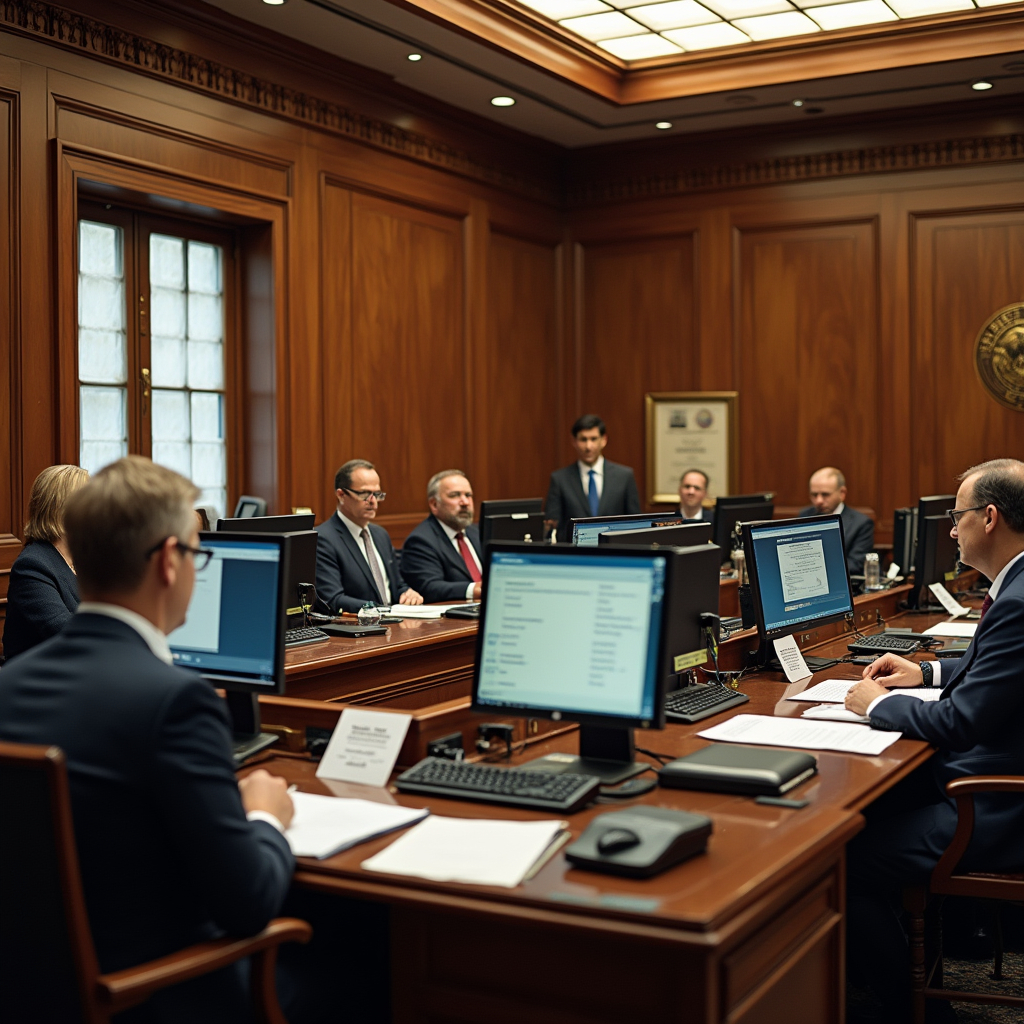This article is authored by Isha Garg. In this article, there is detailed discussion of international and national authorities related to Trade marks which is one of the widely used intellectual property rights. It discusses the various authorities that are established under Trade Marks Act, 1991 and their functions. It also deals with the reasons which led to abolishment of Intellectual Property Appellate Board.
Table of Contents
Introduction
Trade mark is a distinctive symbol, sign, word or phrase that is registered legally under the Trade Marks Act, 1999. It is used to identify and distinguish a product or services of a particular source from those of others in the market. They play a significant role in branding and consumer protection by ensuring that consumers can reliably identify the source of product and services provided in the market. The protection of trade marks is generally governed by governmental authorities in accordance with the standards established by the Trade-Related Aspects of Intellectual Property Rights, 1994 (TRIPS).
The Trade Marks Act, 1999 also adheres to TRIPS and international obligations. This Act provides a comprehensive legal framework for the protection and enforcement of trade marks. It also simplifies the process of registration and establishes various authorities for handling trade mark related disputes.
Trade mark authorities are quasi-governmental bodies responsible for supervising the registration, protection and enforcement of trade marks within certain jurisdictions. These authorities are significant for ensuring the integrity of the trade mark system so that businesses can protect their brand identities from unauthorized use.
Trade mark authorities in India
The authorities responsible for trade marks in India predominantly include:
- Controller General of Patents, Designs and Trade marks (CGPDTM);
- Trade Marks Registry (TMR);
- Intellectual Property Appellate Board (IPAB): Abolished in April, 2021;
- High Courts.
Controller General of Patents, Designs and Trade Marks (CGPDTM)
CGPDTM is a fundamental authority in the realm of intellectual properties. It is responsible for the administration of intellectual property rights (IPR), including trade marks and other industrial designs. This position is controlled by the Department for Promotion of Industry and Internal Trade (DPIIT), Ministry of Commerce and Industry under the government of India.
As per Section 3 of the Trade Marks Act, 1999, the Central Government appoints a person who is known as the Controller General of Patents, Designs and Trademarks. He shall be registrar for the purposes of Trade Marks Act, 1999.
Furthermore, the Central Government has power to appoint such other officers as it thinks for the purpose of discharging functions under control and supervision of the registrar.
The Head office of the CGPDTM (trade marks) is located in Mumbai.
It plays a critical role in fostering innovation, creativity, and fair competition within the Indian economy by protecting intellectual property rights of the individuals. The role of CGPDTM has expanded over years with the evolving intellectual property rights in global trade. The CGPDTM leads a network of offices and divisions, each specializing in different aspects of intellectual property rights. These include:
- The patent office: It has headquarters in Kolkata and branch offices in Mumbai, Chennai and Delhi. It is responsible for the examination and administration of patents in India.
- The design office: It has head office in Kolkata. This office handles registration and administration of industrial designs.
- The trade mark registry: It operates across five offices in Mumbai, Delhi, Chennai, Kolkata and Ahmedabad. Its responsibilities include registration of trade marks and ensuring their protection.
- The geographical indications registry: It is located in Chennai. It oversees registration and protection of geographical indications. Geographical indications are the labels used on products that have a specific geographical location and possess quality specially owing to that region.
- The patient information system (PIS) and intellectual property training institute (IPTI): Both the offices are situated in Nagpur. It offers comprehensive patent information to stakeholders, whereas the other concentrates on training and awareness programs concerning intellectual property.

Trade Marks Registry
In India the Trade Marks registry was established in the year 1940. Now it administers the Trade Marks Act, 1999 and the Trade Marks Rules, 2017. One significant function of the registry is to register all those trademarks which qualify for the requirements of registration as provided under the Trade Marks Act, 1999 and Trade Marks Rules, 2017. It also maintains the register of trademarks.
After joining the Madrid Protocol of 1989, which is a treaty under the Madrid system for the registration of trademarks, the Trade Marks registry also has to perform as an office of origin in respect of applications made by the Indian entrepreneurs seeking international registration of their trademarks and also as an office of the designated contracted party regarding international registrations in which India is designated for safeguarding relevant trademarks.
Section 5 of Trade Marks Act, 1999, provides for the trade marks registry which was established under the Trade and Merchandise Marks Act, 1958.
According to clause (2) of the said section, the head office of trademarks registry will be established at such places as the Central Government may by official gazette specify. For the purpose of facilitating the registration of trademarks, the Central Government may also establish branch offices of the trade mark registry.
Clause (3) provides that the Central Government may by official gazette define the territorial limits within which the trade marks registry should exercise its jurisdiction.
It further provides under clause (4), that there should be a seal of trade marks registry.
The trade marks registry functions under the superintendence and control of the Controller General of Patents, Designs and Trade Marks. It carries out its statutory functions in compliance with the provisions of the Trade Marks Act, 1999 and the Trade Marks Rules, 2017.
The Trade marks registry’s headquarter is situated in Mumbai and branch offices are situated in Ahmedabad, Chennai, Delhi and Kolkata. However, the international registration wing for the purpose of international applications and registrations under Madrid protocol is situated in Mumbai only.
The trade marks registry is established to facilitate the registration of trademarks in India. The Controller General of Patents, Designs and Trade Marks serves as the registrar of the trade marks, supported by officers designated as Sr. Joint Registrar of trade marks and GI, Joint Registrar of trade marks and GI, Deputy Registrar of trade marks and GI, Assistant Registrar of trade marks and GI and Examiner of trade marks and GI.
Administrative steps involved in Trade Marks registry which are contained under Section 18 to 26 of the Trade Marks Act, 1999
Step 1: The application for registration of trademarks is received at the head office (which is situated in Mumbai) or the branch offices of Trade Marks registry. The application is made at a place within whose territorial limits the principal place of business of the applicant is situated. Then the application passes through the formality check and digitization at the respective offices.
Step 2: Generally, the application is examined under Section 9 as to whether the particular mark is capable of distinguishing applicant’s goods or services and also that it is not an already existing mark. In particular, this examination ensures the following are key considerations:
- Whether the relevant mark is prohibited under any law for the time being in force.
- Whether the registration of the particular trademark will create confusion or deception due to duplicity of the existing trademark or the existence of similar trademarks.
- Whether the mark is not opposed to the public policy or does not contain any sign which is not acceptable.
This examination is done centrally at the head office in Mumbai.
Step 3: The registrar, after reviewing the application and examination of all the evidence of use and distinctiveness, decides whether the application for registration should be approved or not. If approved by the registrar, he publishes the application in Trade Marks Journal, an official gazette of Trade Marks registry, which is updated weekly on the official website. The purpose is to inform the public about the proposed trademark registration. The advertisement in the journal typically includes details like the trademark, the goods and services it applies to, the applicant’s name etc.
Step 4: After publication of an application in the journal, any person can file an opposition within four months from the date of publication. In such cases, the opposition proceedings take place in the respective office of the Trade Marks registry.

Step 5: As per Section 21, in opposition proceedings, a copy of the notice of opposition is served to the applicant who must file a counter statement within 2 months from the date of service of notice. If the counter statements are not filed then the application is considered abandoned. A copy of the counter statement is served to the opponent. After this both the parties are called upon to present their evidence on which they seek to rely. Then, if the parties desire for a hearing, the registrar gives them the opportunity of being heard and then makes a final decision. However, the decision of the registrar was appellable to the Intellectual Property Appellate Body. But, now after April 2021, the decision is appealable to the High Court.
Step 6: Under Section 23 of the Trade Marks Act, 1991, when the application for trademark has been accepted then the Registrar shall register the trademark within 18 months of filing of an application and the trademark shall be registered as to the date of making of the application.
Then the registrar shall issue to the applicant, a certificate of registration in the prescribed form under the seal of the Trade Marks Registry.
Powers of registrar
The registrar possess the following powers:
With respect to the application:
- A registrar is bound to register appeals, petitions and applications regarding trade marks in India.
- The registrar is also tasked with processing applications for new summons or notices or associated services.
- He also has power to transfer an order of the tribunals to the civil courts.
- The registrar is bound to receive the short date summons and notices.
- As per Section 4 of the Trade Marks Act, 1999, he has authority to withdraw or transfer any pending matter before him or to any other officer, with the discretion to decide whether the matter is to be dealt de novo or from the point it was withdrawn or transferred.
- He is responsible for receiving the applications regarding the admission, inspection and verification of documents.
Other Powers:
- Generally, before the abolishment of tribunals including Intellectual Property Appellate Board (IPAB) in April 2021, all subject matters were presented before the tribunal by the registrar without any delay. But, after the abolishment all the functions are assigned to the country’s Commercial Courts and High Courts. However, if required and directed by the court, the registrar can adjourn any matter at any time and can present it before the court.
- Powers of registrar related to proceedings as per Section 127 of the Trade Marks Act, 1999, include power to call witnesses for evidence, administer oaths, enforce attendance, compelling the discovery and production of documents. He also has power regarding procedures following the registration of trademarks. It includes the correction and amendment of trademarks and also changes in name, address or any other personal detail of the registered owner, correction of any error in the details of trademarks or update as to change in ownership or any other relevant changes.
- The registrar possesses all the powers of a civil court that are provided under the Code of Civil Procedure, 1908.
- He is charged with implementing orders as to costs that are reasonable and subjected to provisions mentioned under Section 157 of the said Act. He has power to order costs as he thinks reasonable and fair and any other other which shall be executable as a decree of the court.
- However, the registrar has no power to award costs in favor or against the party who has appealed to him against refusal of the proprietor of certification of trade mark.
- The registrar on the application made to him may review his own decision made in the prescribed manner.
Intellectual Property Appellate Board
Intellectual Property Appellate Board (IPABI) was a specialized tribunal in India which used to handle appeals and legal disputes regarding intellectual property rights including patents, designs, copyright, trademarks and geographical indications. It was established on September 15, 2003 by the Central Government and it aimed at reducing the burden on regular courts.
The Intellectual Property Appellate Board conducted its meetings in Mumbai, Delhi, Chennai, Kolkata and Ahmedabad. But, its headquarter was located in Chennai. IPAB was established under Section 83 of the Trade Marks Act, 1999.
The IPAB had power to handle appeals against the decisions made by the registrar of trade marks, patents, geographical indications and copyrights. It also heard revocation petitions, cancellation of intellectual property rights and rectification of the registers of intellectual property rights.
Composition of Intellectual Property Appellate Board

IPAB consisted of a chairman, vice chairman and other members as the Central Government may deem fit. Each IPAB bench was made up of one judicial member and a technical member. The chairman could also serve as a judicial member or a technical member of any other bench in addition to their own bench.
Jurisdiction
Appeals against the decisions must have been filed within three months from the date of decision or direction or within such extended time as the IPAB allowed, with cost.
For the following matters, IPAB had authority to hear appeals against the decision of the controller:
- Any decision related to termination of patent due to its non-working.
- Any decisions related to replacement of applicants.
- Decisions relating to framework and amendments in applications.
- Decisions regarding names of the inventors.
- About correction of clerical mistakes etc.
However, it was abolished by the Indian Government in April, 2021 through Tribunals Reforms (Rationalisation and Conditions of Service) Ordinance, 2021. The functions and powers of IPAB were transferred to the High Courts which are now responsible for hearing the disputes related to intellectual property rights. This step was taken to reduce the backlog of cases and thereby reduce the delay in hearing the disputes.
Factors leading to abolishment of Intellectual Property Appellate Board:
- Inefficiency and delays: The IPAB was often criticized for significant delays in resolving cases. Although, it was established to speed up the adjudication process regarding intellectual property disputes. But, the board became overwhelmed with a backlog of cases, leading to prolonged litigation periods.
- Underutilization: Over time, it was observed that the IPAB was not fully utilized, handling fewer cases than expected. The IPAB was also plagued by vacancies in key positions, which further hampered its efficiency.
- Judicial overlap: The overlap in jurisdiction between IPAB and other judicial bodies led to confusion and increased complexity. The abolishment of IPAB aimed to streamline the judicial process by consolidating IP related cases under the jurisdiction of High Courts.
- Recommendation from legal and policy experts: Several legal experts and committees had recommended abolishing the IPAB due to its inefficiencies. These recommendations were influential in the government’s decision to dismantle the tribunal.
- Strengthening High Court’s role: By abolishing IPAB, the government sought to enhance the role of High Courts in adjudicating disputes related to intellectual properties.
High Courts
The High Courts of all the states play a significant role in enforcement and adjudication of trade mark laws in India. After abolishment of the Intellectual Property Appellate Board (IPAB) in 2021,the High Courts assumed the role of the IPAB more prominently. The High Court has the following jurisdiction in regard to trade marks:
Appellate jurisdiction
The High Court has the power to hear appeals against the orders made by the registrar of trade marks. It includes the refusal of registration, decisions on oppositions, appeals against cancellation of registered trade marks etc. Now these appeals are directly filed before the High Courts.
Original jurisdiction
The High Courts also have original jurisdiction to try and hear matters related to trade marks. The parties can directly file the infringement and pass off suits before the High Courts. Only six High Courts in India (Delhi, Bombay, Madras, Calcutta, Jammu and Kashmir and Himachal Pradesh) have original jurisdiction and can entertain trademark suits.
International trade mark authorities
- United States Patent and Trade Mark Office (USPTO);
- European Union Intellectual Property Office (EUIPO);
- China National Intellectual Property Administration (CNIPA).
United States Patent and trademark Office (USPTO)
It is a federal agency of the U.S. department of commerce that is responsible for overseeing patent applications and registering trade marks in the United States. The office is led by the Under Secretary of Commerce for Intellectual Property and Director of the States Patent and trade mark Office. The position is currently occupied by Kathi Vidal.
Headquarters: Alexandria, Virginia, USA

Functions:
- It grants patents and registers trade marks that help in promoting innovation and protection of intellectual property rights.
- The USPTO reviews patent applications to ensure that they fulfill legal criteria which includes utility, novelty and inventiveness.
- The office reviews the applications related to trade marks. After approval of a trade mark application, trade marks are registered. It provides legal protection from unauthorized use.
- It also provides resources and guidance in regard to trade mark law.
- It reviews trade mark applications to ensure they are unique and are not in conflict with existing trade marks.
- Further, it guides on U.S. intellectual property laws and policies.
- It manages the USPTO’s digital systems to facilitate the submission and processing of trade mark applications.
European Union Intellectual Property Office (EUIPO)
The European Union Intellectual Property Office (EUIPO) was founded in 1994. It is the bureau that is responsible for the registration and management of intellectual property rights including trade marks within the European Union. This office is headed by an executive director. At present the executive director of EUIPO is Joao Negrao.
Headquarters: Alicante, Spain
Functions:
- This office is in charge of managing the registration of the trade mark and administration of industrial designs.
- It offers alternate dispute resolution to resolve disputes related to intellectual property rights without resorting to litigation.
- It also offers online tools for searching and retrieving information regarding registered trade marks and designs.
- It engages with global IP offices to harmonize standards and facilitate international property rights.
- It offers an online platform for filing and managing applications as well as communicating with offices.
- It delivers training, resources and awareness programs to inform stakeholders on intellectual property rights.
China National Intellectual Property Administration (CNIPA)
It was initially established in 1980 as the State Intellectual Property office (SIPO). Later on it was renamed as China National Intellectual Property Administration. It is the government authority charged with the administration and enforcement of intellectual property rights in China. It is headed by Shen Changyu, director of CNIPA.
Headquarters: Haidian district, Beijing.
Functions:
- It oversees the registration and protection of trade marks and other industrial designs in China.
- It handles disputes related to refusals, oppositions and cancellations of trade marks.
- It also conducts educational campaigns to raise awareness about Intellectual property rights and their enforcement among the public.
Conclusion
Trade marks authorities play a critical role in regulation and safeguarding of trade marks. They ensure that trademarks, which are crucial assets of businesses, are accurately registered, maintained and enforced. By establishing a strong legal framework and overseeing the process of examination, application and registration, these authorities preserve the distinctiveness of brands and prevent consumer confusion. Additionally, they handle dispute resolution, manage the cancellation or rectification of trade marks. They also ensure adherence to both national and international regulations.
In short, trademark authorities play a vital role in fostering innovation, ensuring fair competition and safeguarding the identity and reputation of businesses globally. Their work significantly contributes to economic growth by guaranteeing that intellectual property rights, especially trademarks, are respected and enforced.
Frequently asked questions (FAQs)
Who approves trade marks in India?
In India, trademarks are approved by the office of the Controller General of Patents, Designs, and TradeMarks (CGPDTM), which operates under the Ministry of Commerce and Industry. However, the specific division responsible for trademarks is the Trade Marks registry established under the Trade Marks Act, 1999.
What are the advantages of obtaining trademark registration?
Following are the advantages of obtaining trademark registration under the Trade Marks Act, 1999:
- It is the prima facie evidence of ownership of the trademarks.
- It acts as a significant asset for a business or company and it also contributes to the goodwill generated.
- It gives stronger enforceable rights to prevent others from using the trademark in connection with the goods and services for which it is registered.
- Trademarks like other assets can be sold, licensed or assigned.
- Registration of a trademark usually covers the whole of India. It means it will be valid pan India.
When and why was the IPAB discontinued?
The IPAB was abolished in April 2021 by the Indian Government in April, 2021 through Tribunals Reforms (Rationalisation and Conditions of Service) Ordinance, 2021. IPAB was discontinued due to several reasons but one of the reasons was to reduce the backlog of cases and thereby reduce the delay in hearing the disputes.
How long does it take for a trademark to be registered in India?
The time taken for trademark registration can vary, typically it takes 18-24 months to get it registered without any objection or opposition. However, the trademark application number is issued within one or two days of filing an application.
Can application of trademark be applied online?
Yes, application for registration of trademark can be applied online through official website of IP India ipindiaonline.gov.in. The online system allows for the submission, tracking and management of trademark applications.
How to renew the trademark registration?
In India, registered trademarks are valid for 10 years from the date of application. The owner can renew his trademark for another 10 years by filing a renewal application with the Trade Marks registry and paying the required fee. The registration can be renewed for an indefinite period as long as the renewal fees are paid every 10 years.
Can the registered trade mark symbol Ⓡ be used ?
Registered symbol Ⓡ can be used next to the trademark once the trademark is registered and registration certificate is issued. However, claiming the registered trademark falsely, is an offense. Till the registration is obtained, a person can represent his trademark along with the letters ™ to indicate that the said person claims rights over the trademark.
The status of the trademark application is “send to vienna codification”. What does it mean?
It is one of the initial stages of the trademark registration process where the status in the Trade Mark registry website displays as “Send to vienna codification”. This step is a part of trademark registration process, and is initiated when any trademark comprising figurative elements or logo is assigned a Vienna code by the Indian Trade Marks registry. This is one of the first steps taken by the registry where the trademark comprises a figurative element or logo. The vienna code is assigned based on the nature of the figurative element or logo. Such figurative elements or logos are codified according to the Vienna agreement. Once the vienna codification is done, the status of trademark application is usually changed to “Formalities Check Pass or Formalities Chk Fail”.
References
- https://www.uspto.gov/
- https://www.euipo.europa.eu/en
- https://english.cnipa.gov.cn/
- https://ipindia.gov.in/writereaddata/Portal/Images/pdf/4__1___b___i__ii__iii__iv__Organizational_Structure_of_office_of_CGPDTM.pdf
- https://corpbiz.io/learning/powers-and-functions-of-the-registrar-of-trademark/#:~:text=As%20per%20the%20Section%203,3%20of%20the%201999%20act
 Serato DJ Crack 2025Serato DJ PRO Crack
Serato DJ Crack 2025Serato DJ PRO Crack









 Allow notifications
Allow notifications



